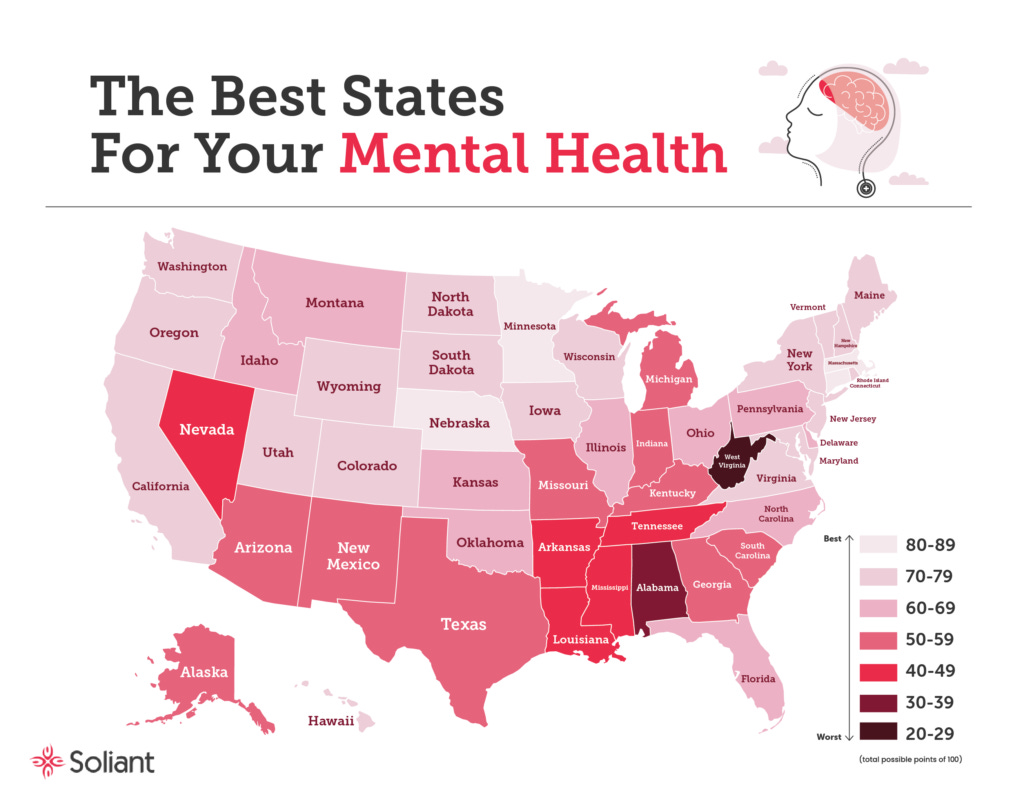🤝DEA Extends Telehealth Prescription for Controlled Meds
Your 10/15/23 update on all things mental health
Good morning! ☀️
And Happy Sunday!
Today, we cover the Drug Enforcement Administration’s (DEA) rule allowing controlled substances to continue to be prescribed through telehealth, new research around mental health and light exposure, and California’s push towards greater flexibility around involuntary hospitalization.
Question: Which are best states and worst states for mental health?
Controlled Medications Prescribed through Telehealth
Controlled medications are drugs or chemicals whose manufacture, possession and use is regulated by a government. Among these are stimulants for attention-deficit hyperactivity disorder, benzodiazepines for anxiety, and drugs for opioid use disorder.
The United States Drug Enforcement Administration (DEA) has, for the second time, “extended temporary rules” that allow controlled medications to be prescribed via telehealth (link). These rules were established during the COVID-19 pandemic as an exception to the Ryan Haight Act, which requires “at least one in-person medical examination before a doctor can prescribe a controlled medicine.”
The flexibilities will now be extended through December 31, 2024 while the DEA and Department of Health and Human Services consider further public comments and revisions.
Other mental health-related news
New York Gov. Kathy Hochul threatened to fine hospitals that did not quickly reopen psychiatric wards that were closed at the height of the pandemic. She has accused hospitals of refusing to open their psychiatric wards due to concerns around the wards generating less revenue than other “lines of service” (link)
Due to a surge of demand, some 988 state crisis hotlines have had to limit services for frequent users (link)
Reads on research
A study in the JAMA Health Forum reviewed about 1 million overdose deaths with education information about the deceased. The study found that lower educational attainment is associated with higher growth in overdose deaths and that overdose deaths have become more prevalent in groups with lower socioeconomic status (link)
A report by the Commonwealth Fund sought to understand why the United States “spends twice as much per person on health as the average of peer nations” by understanding where “excess” spend was going. The report found that the excess was a result of higher administrative costs, higher salaries and wages for physicians and nurses, and high prescription drug prices (link)
The largest study on light exposure and psychiatric disorders found that greater night-time light exposure was associated with increased risk for many psychiatric disorders including major depressive disorder, PTSD, and psychosis (link)
Reads on policy
Gavin Newsom signed “the first of a series of bills that aim to transform California’s mental health system”. (link) These controversial bills loosen rules on involuntary treatment set by the Lanterman-Petris-Short Act, allowing for greater flexibility when involuntarily hospitalizing people who are mentally ill.
Answer: Soliant’s report on the “Best States for Mental Health” reviewed different factors including the frequency of “bad mental health days” reported by the existing population, access to mental health providers, suicide rate of 15-24 age group, unemployment rates and violent crime rates. The report found that the top three states for mental health are:
Nebraska
Connecticut
Massachusets
And the worst states for mental health are:
West Virginia
Alabama
Arkansas
Notably, the report also found that there is a significant correlation between disconnected youth (youth who do not work or go to school) and states’ overall ranking.
You can read the entire report here (link)
If you enjoyed this newsletter, consider sharing it with a friend or colleague. You can directly forward the newsletter, or use the button below to get rewards for referrals. The goal is to be able to hire support staff to help sustain the newsletter. Thank you for your support 🙏




